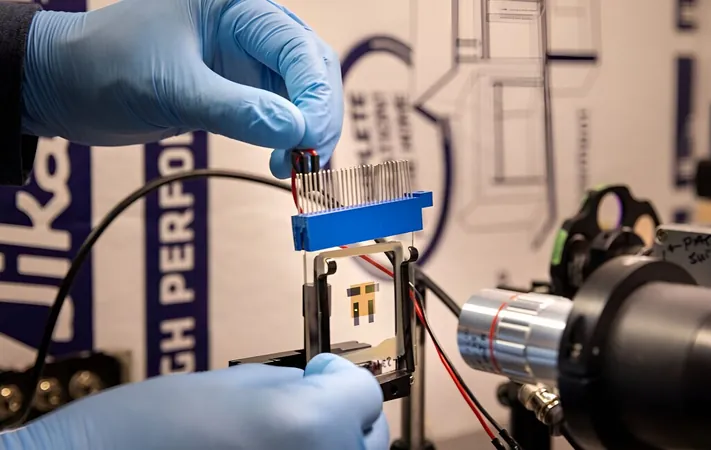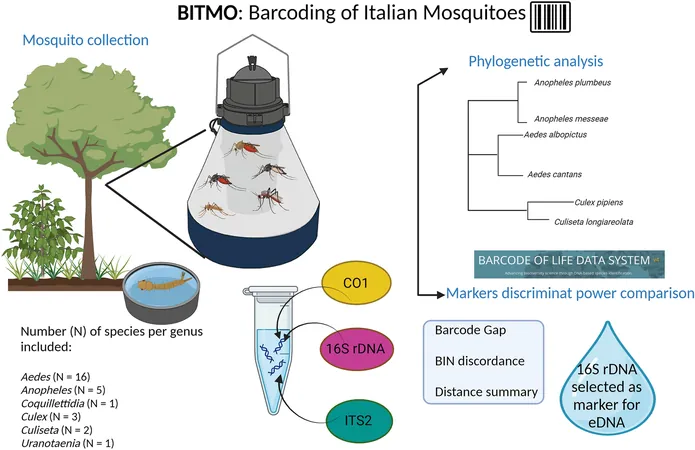
Revolutionary Breakthrough Extends the Life of Carbon-Capture Materials!
2024-09-27
Revolutionary Breakthrough Extends the Life of Carbon-Capture Materials!
In a groundbreaking development, researchers at Lawrence Livermore National Laboratory (LLNL) joined forces with the Georgia Institute of Technology to unlock new insights into carbon dioxide (CO2)’s impact on the stability of amine-functionalized porous materials. These materials play a pivotal role in Direct Air Capture (DAC) technologies that aim to reduce atmospheric CO2 levels.
Their findings, published in the Journal of the American Chemical Society and highlighted on the journal's cover, reveal the intricate interactions between CO2 and poly(ethylenimine) sorbents, which could pave the way for more durable and efficient DAC systems. Simon Pang, the project's principal investigator, emphasized the significance of their research, stating, “This study underscores the importance of considering all atmospheric components in the design of DAC processes and materials. Our findings will be instrumental in developing next-generation sorbents with enhanced durability, contributing to more efficient and cost-effective carbon-capture solutions.”
Amine-based sorbents have emerged as the leading choice in DAC technology due to their remarkable ability to capture CO2 under very dilute conditions. Nevertheless, maintaining the long-term stability of these materials has posed considerable challenges, primarily due to oxidative degradation. This new study tackled the previously unclear role of CO2 in speeding up the oxidative processes affecting these sorbents, clarifying contradictory data from earlier research.
The research unveiled a non-linear effect of CO2 on the oxidation kinetics of poly(ethylenimine) sorbents, revealing significant variation depending on temperature and CO2 concentration. Sichi Li, lead author of the paper, explained the dual role of CO2 in the oxidation process: “On one hand, CO2 catalyzes critical oxidation reactions, while on the other, it reduces polymer branch mobility, which slows down radical propagation. These contrasting effects are key to understanding the complex degradation profiles we observed.”
The implications of this study extend far beyond merely reconciling existing literature. By pinpointing polymer side chain mobility and acidic environments as major accelerators of oxidation, the study opens avenues for new strategies aimed at prolonging the lifespan of these sorbents. Proposed solutions include introducing specific functional groups, using additives, or employing oxide supports engineered to lower polymer mobility or neutralize acidic conditions, potentially leading to significant improvements in oxidative degradation rates.
This exciting discovery comes at a crucial time when the global urgency to address climate change is greater than ever. With effective and innovative carbon-capture technologies like DAC being prioritized, researchers hope these new insights will contribute significantly to developing more sustainable and efficient techniques to combat atmospheric CO2 levels. As the world continues to grapple with climate challenges, advancements like these could be pivotal in shaping a greener future.
Stay tuned for more updates on cutting-edge research aimed at safeguarding our planet!





 Brasil (PT)
Brasil (PT)
 Canada (EN)
Canada (EN)
 Chile (ES)
Chile (ES)
 España (ES)
España (ES)
 France (FR)
France (FR)
 Hong Kong (EN)
Hong Kong (EN)
 Italia (IT)
Italia (IT)
 日本 (JA)
日本 (JA)
 Magyarország (HU)
Magyarország (HU)
 Norge (NO)
Norge (NO)
 Polska (PL)
Polska (PL)
 Schweiz (DE)
Schweiz (DE)
 Singapore (EN)
Singapore (EN)
 Sverige (SV)
Sverige (SV)
 Suomi (FI)
Suomi (FI)
 Türkiye (TR)
Türkiye (TR)